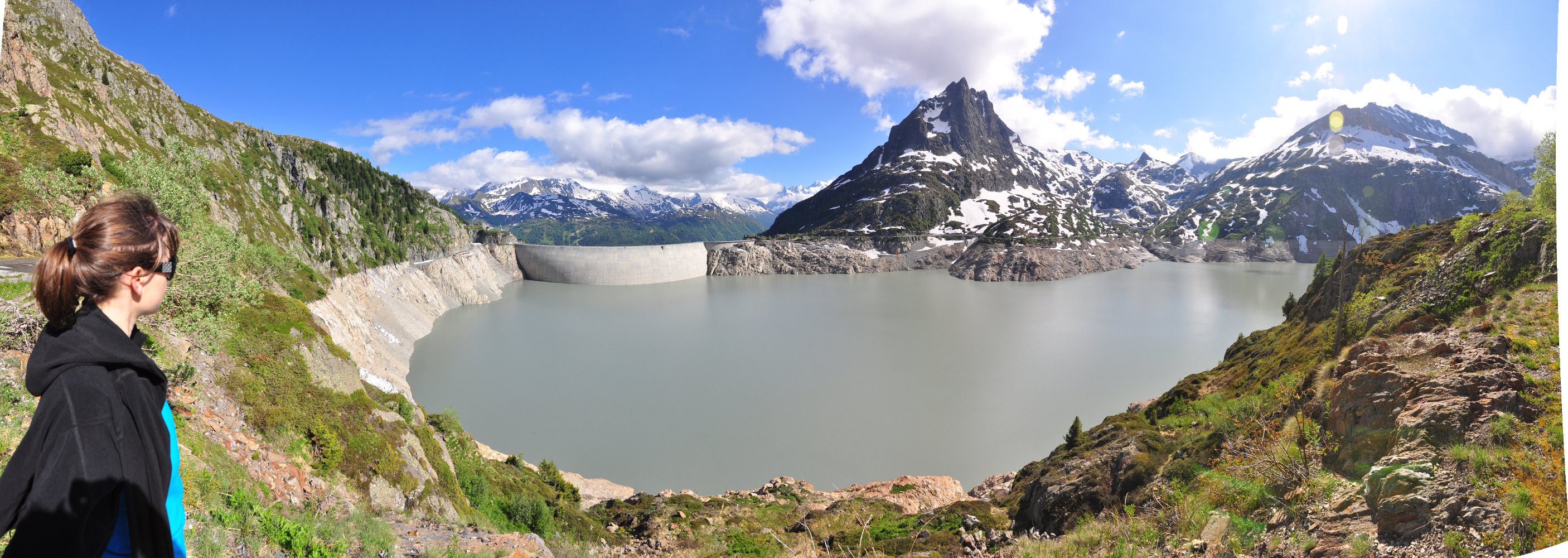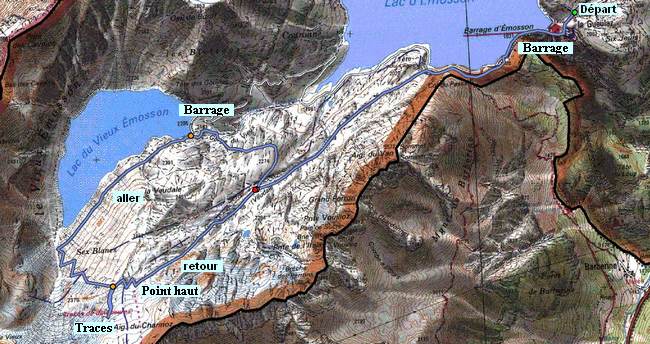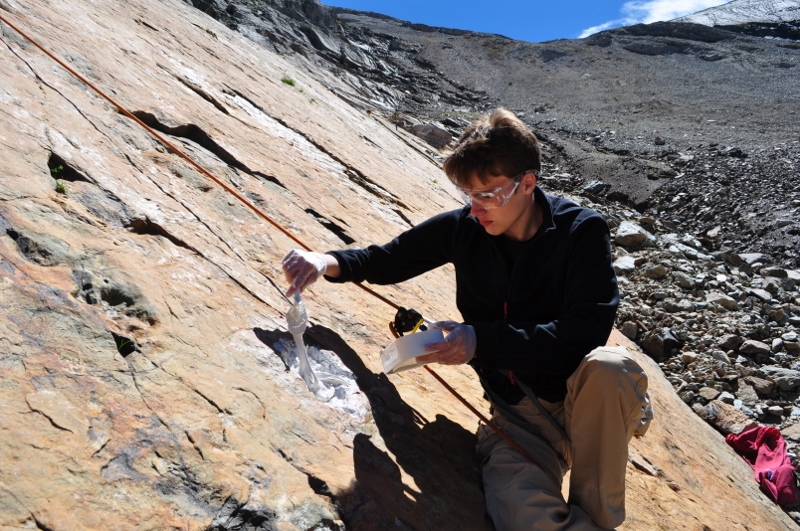Home > Our Camps > In the footsteps of Dinosaurs
To sign up
Add to wishlist
Introduction
Join the Paleontologists of the Scientific Department of the Natural History Museum of Geneva and the Animators of Objectif Sciences International and engage yourself alongside them in a Real Project of Scientific Research Scientific Research Participate in scientific research research programs. Help advance research on oceans to help us understand them better. Do this on our nature courses on dolphins and whales. to discover, on a site Alpine at 2,500 meters of altitude, the traces of the Archosaur footprints who lived here nearly 250 million years ago.
The stay
Concept learned on the stay
Biodiversity, Environment, Geology, Scale of Geological Times, Paleontology, Land Clearance, Laboratory Preparation, Sedimentation and Sedimentation, Fossilization and Fossils, Life and Earth Sciences, Ecology applied to Sustainable Development, Management of the Earth ’Environment and Preservation of Sites of Natural Interest, Paleogeography, Geography, Climatology, Movements of the Earth’s crust and Formation of reliefs (History of the Alpine chain) Lifestyle and evolution of the great reptiles of the secondary era.
Equipment Used on Stay
Geological Maps, Satellite Map Data, GPS, Binoculars, Compass, Digital Camera and Telescopic Mast, Computer, Retouching and Modeling Software, Binoculars, Geologist’s Hammer, Microscope, Measuring Tools, Depth Gauge, Casting Equipment, Log sheets by drawing, knives, trowel, hammer, chisel, brush ...
The Stay
You will join the Paleontologists of the Scientific Department of the Museum of Natural History of Geneva and the Animators of Objectif Sciences International near the dam of Vieux-Emosson, in Valais
Vacation Camp
Valais
Switzerland
Every year the NGO Objectif Sciences International offers several science camps in Valais, Switzerland, on different themes (fauna & flora, architecture, palaeontology, geology, drones...) You will find, at the following link, more information about our nature camps.
Switzerland
Vacation Camp
Valais
Switzerland
Every year the NGO Objectif Sciences International offers several science camps in Valais, Switzerland, on different themes (fauna & flora, architecture, palaeontology, geology, drones...) You will find, at the following link, more information about our nature camps.
. Together, you will prepare to start on a Real Project of Scientific Research
Scientific Research
Participate in scientific research research programs. Help advance research on oceans to help us understand them better. Do this on our nature courses on dolphins and whales.
to discover on an alpine site at 2,500 meters of altitude the Traces of Footprints of “Dinosaurs” who lived here nearly 250 million years ago.
Depending on your age and your physical commitment you will opt for a Scientific Research
Scientific Research
Participate in scientific research research programs. Help advance research on oceans to help us understand them better. Do this on our nature courses on dolphins and whales.
Stay of 5 days or 10 days.
A bit of history: On August 23, 1976 the French geologist G. Bronner discovered what is to this day the most important deposit of traces left by “dinosaurs”. Why do we put the term dinosaur in quotation marks? Because in fact these traces date back to the Triassic period and at that time it was not yet dinosaurs but ancestral Archosaurs. The site is potentially very important. 800 traces have already been listed. There are still many more to study and no doubt to discover.
History of the Project: The Museum of Natural History in Geneva, Paleontology section, and the NGO Objectif Sciences International joined forces to reactivate the “Dinosaurs” research project in Vieux-Emosson. The Project will be entrusted to you and you will be supported by the Museum’s Paleontologists and the NGO’s Animators.
In this majestic environment we propose you to choose between two Research Projects, one for 5 days, the other for 10 days.
The 5-day research project will take you to the pedestal on which are printed traces and where you will be responsible for listing, inventorizing, drawing, photographing, positioning all visible traces and answering questions that they generate: hence came the “dinosaurs”, where did they go? how did they move? how many were they? were they all of the same kind, how to date these imprints very precisely? You will go back, hike and camp on site for the duration of the stay.
The 10-day Research Project will focus on a second fingerprint site at a higher altitude. The conditions of roaming, camping and research will require a substantial physical level. You will climb important elevations, you will walk on difficult paths, you will practice your research on uncomfortable inclined planes, the weather conditions could vary, from lenient to rigorous. But these conditions will be an opportunity for the leaders of Objectif Sciences International to introduce you to roped hiking and management of group safety, fire control during the preparation of Campfire evenings and the Protection of the environment, the climatology linked to the camp of High Mountain.
In both cases you position yourself as Researchers in Paleontology, eager for Explorations and Discoveries. You will participate directly in the results.
The research
Why would you want to reactivate the “Dinosaurs” research project in Vieux-Emosson? It is for the purpose of Preserving and Valorizing an already classified Palaeontological site which erosion threatens to erase. Indeed, the traces touch on the slabs of friable rocks and the climatic conditions at this altitude, especially the climatic changes deteriorate them considerably quickly. How to preserve this site? Discovering all the traces, studying, making casts, cataloging, and photographing them, etc ... besides the knowledge that this study would bring, these missions would make it possible to reconstruct these traces and to exhibit them in a museum. This would be the first act of conservation of these witnesses, for us today and for future generations. But a larger project could emerge from this research, such as a ranking as a “Remarkable Site to Preserve”. So in-situ conservation actions of this fragile mineral world could revive thanks to the results you obtain?
Location: This trip will take place in the Valais Alps between Chamonix and Valais in Switzerland, near Vallorcine. From the dam of old Emosson (2 205m) you will walk for about three hours on the site at 2400m. This is where you will establish your base camp as part of the 5-Day Research Project. Those of you who will participate in the 10-day Research Project will go further, higher up the Exploration.
Geography and geological context
The Helvetic slope of the Col de la Terrasse located at the south-east end of the circus is home to lands dating back to the Triassic (-230 million years). It is here in the valley of Vieux Emosson, in the town of Finhaut (Valais Switzerland) that the outcrops of fossilized sandplates (sandstone) bear the traces that were hitherto constantly hidden under a firn. It is currently melting during the summer,exposing the tracks whose erosion has unfortunately already started.
The slab that bears the traces of “dinosaurs” is part of the indigenous cover of the outer crystalline massif of Aiguilles Rouges. On a gneissic base are stacked a succession of different layers. The slab traces are located at the start of the stack. The whole dives from 30° to 80° to the northwest!
It is an exceptional geotope that presents itself at this altitude. These places bear traces that make it an exceptional geological and environmental heritage, also possessing a rare scientific and cultural value. All these sloping layers are an open geological book of great rarity and a unique educational value.
Daily on site
Each one of you will get involved in the Research Program Research Program Collaborate with scientific organizations. Actively take part in participative science research programs. All this is possible with our plankton discovery sailing expedition. and participate in the Daily Gestures of a group camped on a base camp.
The Research Program
Research Program
Collaborate with scientific organizations. Actively take part in participative science research programs. All this is possible with our plankton discovery sailing expedition.
will define an Objective. It is in this perspective that everyone will be given a decisive mission with his comrades. Each campaign will bring its share of expected advances and you will have had the chance to participate in a large scale Human Scientist Adventure.
Daily Gestures will also be part of the experience. You will share the tasks. Will you have to prepare a fire? Whether to warm up a dish? Should you define the logistical arrangements for the next day’s outing? All these things that make up the daily life of the Explorers will also be yours: preparation of breakfast, preparation of the next meal, distribution of equipment to transport etc ... etc ...
Paleontologists will be at your side on the site. The animators will support you and will supervise you in all the tasks.
After which you write the Logbook and put your notes in order.
The team
The team will be composed of several people. The Paleontologist(s) of the Museum of Natural History of Geneva whose role will be to support you, to explain you, to guide you in all the scientific part of the Project, in all your disciplinary learning. These people are all experts in paleontology and / or geology or both. The International Science
Science
La science est désormais l’affaire de tous. Découvrez la science d’une manière ludique et active. Nous vous proposons d’en découvrir plus sur nos expéditions à la voile, découverte du plancton.
Goal Coach(s) whose role will be twofold: on the one hand to ensure the smooth running of the expedition and on the other hand to enable you to acquire a sum of knowledge through the educational and Experimental approach of the Project. These have the competence of the educational project, the Responsibility of the group.
Accommodation: The restaurant of the Emosson dam will welcome you during the preparations for departure and prior to and during the last days of return. You will be comfortably accommodated in a friendly place, full of human warmth. From the terrace you will have before your eyes the magnificent landscapes of the Alps. Solange, mistress of the place will ensure that the stay is perfect. A group dormitory equips this Haute Mountain establishment and the dishes are exquisite.
To reach your base camp 1 you will go hiking at 2,400 meters above sea level and about three hours walk from the dam. You will set up your camp on site. You will ensure the daily team: preparation of meals, storage etc ... You will walk around the base camp for your Scientific Activities. This is part of the 5-day stay.
As part of the 10-day stay, you will spend the first 5 days at Base Camp 1 and then dismount your campsite to continue hiking your way higher and further where you will set up your base camp 2. You will walk around the base camp for your Prospecting and Scientific Research
Scientific Research
Get involved in science research programs. Help build up our knowledge of our oceans. Help us to understand them better. Do this on our plankton discovery sailing expedition.
activities.
Frequently Asked Questions: (FAQ)
![]() Question from Pierre L. (French): “do I have to equip myself like a hiker in the mountains or as a paleontologist”?
Question from Pierre L. (French): “do I have to equip myself like a hiker in the mountains or as a paleontologist”?
Objectif Sciences International: The recommended equipment is that of High Mountain Hiker. A dress list is sent to each participant well before departure. The paleontologist does not have specific equipment. The Scientific Tools will be provided by Objectif Sciences International.
![]() Question from Thomas D. (Switzerland): “Can I bring my camera and my computer”?
Question from Thomas D. (Switzerland): “Can I bring my camera and my computer”?
OSI: Yes you can bring your camera ensuring not to forget its protective case. We do not recommend bringing your computer or mobile phone (telephony does not pass here).
![]() Question from Mrs W. (Belgian): “Will my son be able to search fossils of dinosaurs”?
Question from Mrs W. (Belgian): “Will my son be able to search fossils of dinosaurs”?
OSI: No, the Scientific Project is based on the discovery and study of dinosaur tracks, that is to say the footprints. We do not potentially expect to encounter fossilized skeletons of dinosaurs.
![]() Question by Asunción T. (Spanish): “Could I take notes on my Personal Scientific Exploration Workbook”?
Question by Asunción T. (Spanish): “Could I take notes on my Personal Scientific Exploration Workbook”?
OSI: Yes, of course you will be able to use your own notebook. It will be a wonderful memory for you as well as for your own children later, to whom you will show your exploits. You will also have to contribute to making up the Scientific Journal of the Expedition.
…………………………………………………………………………………………………………………..
2015 Logbook Example:
http://www.osi-univers.org/Dino-Emo...


























